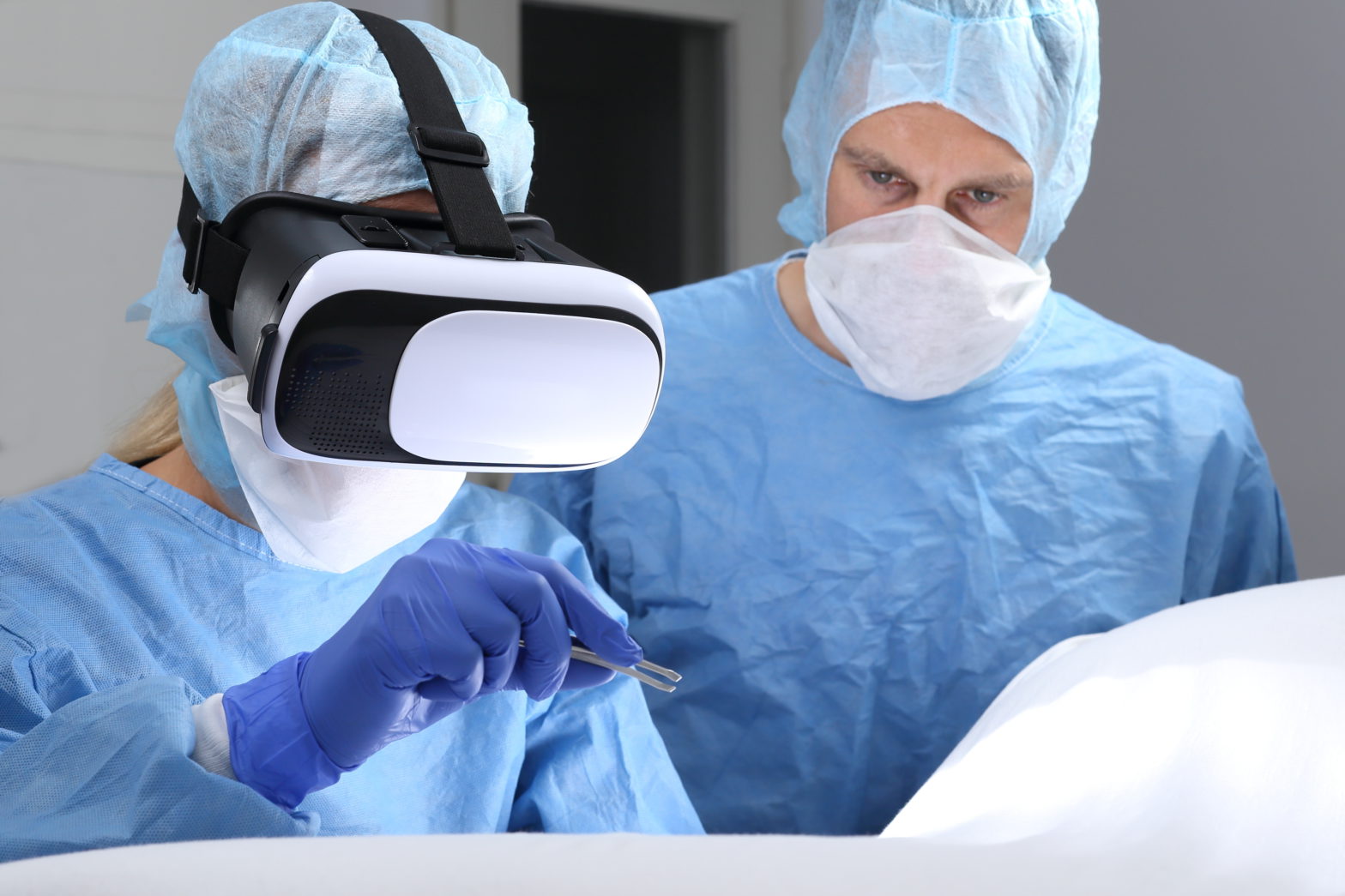Virtual reality has many applications, including in healthcare. The latest innovation involves using patient’s actual scans to create a pre-surgery training platform.
Throughout the COVID-19 pandemic, technology innovations have been a focus for many industries. We’ve seen new innovations created to fill the virtual void where that technology didn’t exist, and we’ve seen rapid advancements in other areas. Virtual reality is benefitting from tech advancements and innovations, even though many people still view VR as something traditionally used by gamers. The truth is, though, that VR was used for other things long before it was used for gamers. And the latest advancement in VR technology helps neurosurgeons prepare for complicated brain surgery using the actual patient’s brain.
MetroHealth, a healthcare system in Cleveland, Ohio, has partnered with Chicago-based medical technology company ImmersiveTouch. No matter the area of the body, every surgeon requires scans prior to a procedure. These could be CT, MRI, X-Ray, ultrasound or any other form of imaging. From those scans, ImmersiveTouch creates a 3D virtual reality simulation. According to their website, “ImmersiveTouch® is equipped with a suite of revolutionary features designed to enable clinicians to rapidly visualize and engage with patient-specific anatomy in 3D virtual reality.”
Dr. Ben Roitberg, MetroHealth’s neurosurgery department chair, was brought to the system in the summer of 2017. Roitberg is also a professor at Case Western Reserve University School of Medicine, and he has been working with ImmersiveTouch since 2006. Even back then he saw the potential for VR, but it could not be utilized for actual patients at the time. Converting the scans from 2D to 3D took too long to be economical or practical, but times have changed. Where training used to be simply for those who need practice, now models can be developed for particularly tough cases.
“To me, that was always deficient. It’s not only the early trainees who need rehearsal. The specialists need rehearsal, too, but at a very different level,” Roitberg said. “The specialists need rehearsal ahead of a difficult and unusual case.”
Specialists can now train directly on a model of their patient’s brain. It’s a huge shift for surgeons in general, but especially for neurosurgeons. Difficult and complicated procedures often take place around the skull base or are vascular procedures for aneurysms and other blood vessel disorders. Neurosurgeon’s can now use VR for a “pre-do,” to get an idea of what the actual procedure might look like. The surgeon simply load’s a patient’s MRI or CT scan to a disc and sends the images to ImmersiveTouch, which uses those images to create the virtual model, they then upload to a computer system.
Dr. Deven Reddy, a neurosurgeon with MetroHealth, has been using this technique to prepare for complicated cases. “The advantage I think it gives us is the ability to get a more comprehensive perspective of what we’re dealing with,” Reddy said. “It allows me to visualize the area of interest, whether that’s a tumor or an aneurism, in a 3D, immersive, virtualized platform that allows me to plan in advance a strategy for surgery.”
The system works much like a VR gaming headset accompanied by hand controls. If you walked into a doctor’s office while “practicing” for their next procedure, no one would fault you for thinking they were playing Medal of Honor or some other VR game. But you would be wrong.
Virtual reality has been used in training exercises in the medical field for years, but only recently have we had the capability to use a patient’s actual scans for surgeons to prepare. Especially for complicated brain surgery, there is no “do over,” You can’t just go back and try again if you mess up. Messing up that kind of surgery can result in nerve damage, paralysis, cognition problems, loss of brain function and death. And it’s not something you can fix once it’s done, the brain just doesn’t work that way. So having this technology available for doctors is a fabulous way to decrease the risks associated with specific surgeries.
Both Dr. Roitbert and Dr. Reddy agree that this technology will continue to evolve. It will, all technology does, and future innovations could include haptic feedback or other ways to more accurately simulate what a procedure will be like. Both men also believe that this technology will become standard practice for complex cases in the future.
Humans have long been innovative and inventive problem-solvers. Just because we’ve tackled one problem doesn’t mean that’s the end, it’s usually just the beginning. Technology is no different, and as we continue to build on what we know and what we are learning, we will find more ways to make our lives easier, extend the human lifespan, keep people healthier, and more. We’re not finished, we are just getting started.

